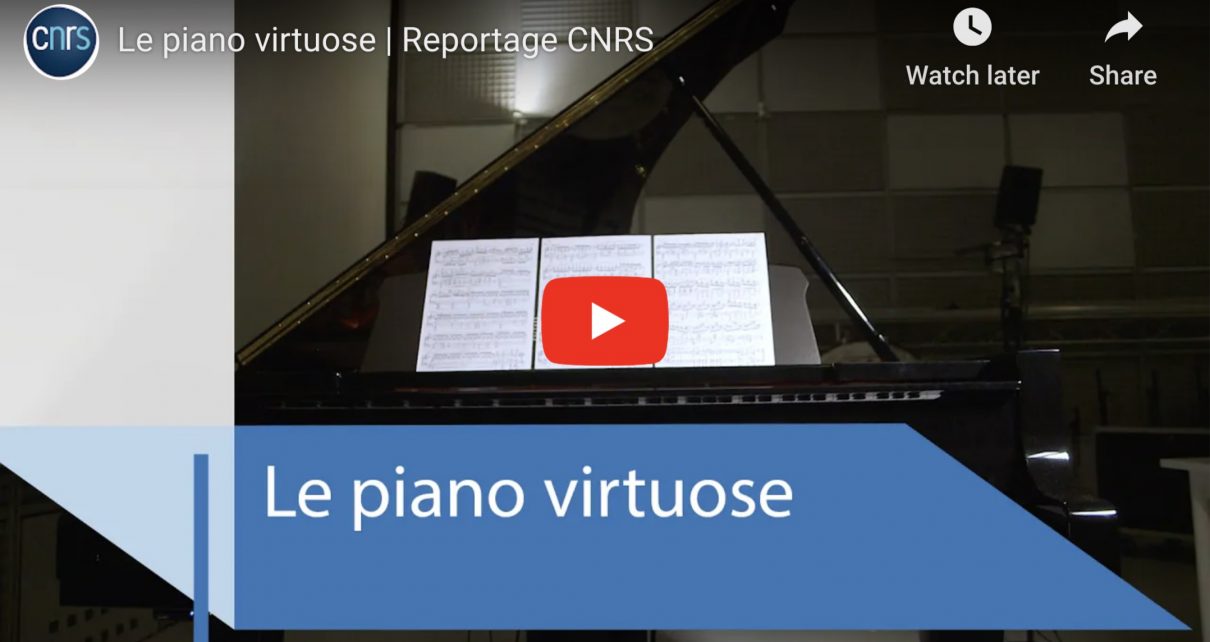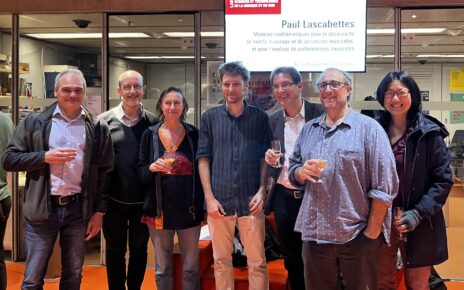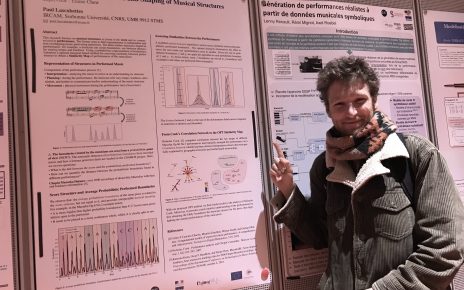The video on our work, Le piano virtuose, made by CNRS Images is now published on Le Monde and the CNRS le journal (also shared on the INS2I website and on the CNRS INS2I Twitter account, @INS2I_CNRS). Many thanks to CNRS Images for this beautiful film. Bravo to Pierre de Parscau for the fine cinematography and Nicolas Baker for the excellent production!
The film features the project’s reproducing piano, a Bösendorfer VC280 Enspire PRO. Pierre de Parscau, cinematographer and editor, interviewed Elaine Chew and Corentin Guichaoua on the study of music structures in performance; Daniel Bedoya operated the piano and assisted with the sound recording; Lawrence Fyfe showed the project’s citizen science platform.
See the photos of the filming which took place 8 October 2020. CNRS Images is the video/photo « lab » of the CNRS that produces public outreach videos on the CNRS news website.
English translation of the script [PDF]:
No it is not an illusion, this piano is capable of doing without a pianist to play Frédéric Chopin’s Ballade No. 2 in F major. What you are listening to here is an exact reproduction of a performance that has been recorded by the instrument and which it can then replay with all the pianist’s intentions. But what are the details that make this performance so singular? How do you define the “style” of a professional pianist and what are the tools he uses to bring a score to life? A scientific team has decided to conduct the investigation.
We are at IRCAM, a research institute specialising in music. This is where mathematician Elaine Chew and her team are trying to unravel the mysteries of musical interpretation. A project that this professional pianist has spent twenty years developing. To build this study and collect data on the performance of pianists, she can count on this piano like no other.
EC: This type of piano was designed as a player piano to be able to replay performances even when no one is there. Often you might see this in a hotel lobby, people might buy it to have it in their home to hear, for example, Rachmaninov or Glenn Gould play in their living room. But here we are using it very differently : to us, this is a scientific instrument that is like the MRI machine for performances. And we are extracting fine details of the performances with the help of recordings on this machine.
Equipped with numerous sensors, this piano is capable of recording the exact pressure of the pianist’s finger on the keys, the velocity of his playing or the movements of her feet on the pedals. The instrument will then be able to reproduce the human performance identically. The extremely fine details recorded by the piano are transmitted to a computer as data. For several months, professional pianists will take turns on this keyboard to interpret different pieces. From the same score they will apply their own style, give a particular colour to their playing by making choices and technical effects that the piano will record.
EC: We are in effect asking musicians to reveal the secrets of the trade. And some musicians may not like that, but I think there are many who would be interested in explaining what it is that they do. It’s like a magician revealing their tricks ! I believe that the more knowledge we have about something, the more we are able to enjoy it.
Each piece recorded by this piano will be analysed and “explained” by the pianist herself. It will also be offered to less expert ears. Researchers will thus make available to the general public an online application that will allow them to listen to these recordings and, above all, to annotate them. For this participatory science project, listeners will, for example, be asked to indicate at which moments musical phrases begin and end, identify groups of notes or particular accents placed on certain notes. Based on these annotations, the researchers will build a computer model reproducing the listeners’ reactions and will thus be able to automatically analyse each pianist’s performance.
CG: The elements that will make us perceive something in one way or another will come from many sources. They will come both from the score and from the motifs that we will be able to spot in it, they will come from the performer who has spotted certain motifs among all those that we could perceive and who has transmitted them in her interpretation, and they will also come from the listener who will listen and note or not note certain things.
EC: The choice for the performer comes in what to highlight of all the options within the score. So over here, I have noticed that the notes are grouped in fours.
But the left hand is doing this long line…and a shorter phrase going up to a note that is the peak…that’s a bit tense, and then coming back down…And we put that together, the fours against the long line…Let me do that again faster at speed…So that’s how it should sound, but hopefully if you now know that I was thinking of those fours, you pay attention to them, and you hear that the tension between that grouping of fours and that long line of left hand coming together and sort of meshing together. And you hear it slightly differently.
By identifying the techniques used by professional pianists during their performances, this project will provide tools for the general public to explore and, why not, be inspired by this expert musical vocabulary. A way of appropriating the human signature left on the ivory and ebony of a keyboard.




